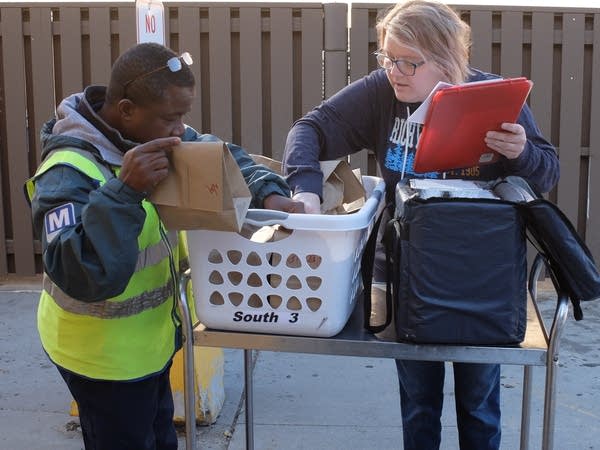Proposed shift in funding for older adult services worries rural providers

Andrea Pollock helps Osbert Duoa arrange meals to be delivered to senior citizens in Moorhead. Metro transit bus drivers teamed up with volunteers to make sure meals were delivered during the pandemic.
Dan Gunderson MPR | News 2020
Go Deeper.
Create an account or log in to save stories.
Like this?
Thanks for liking this story! We have added it to a list of your favorite stories.


